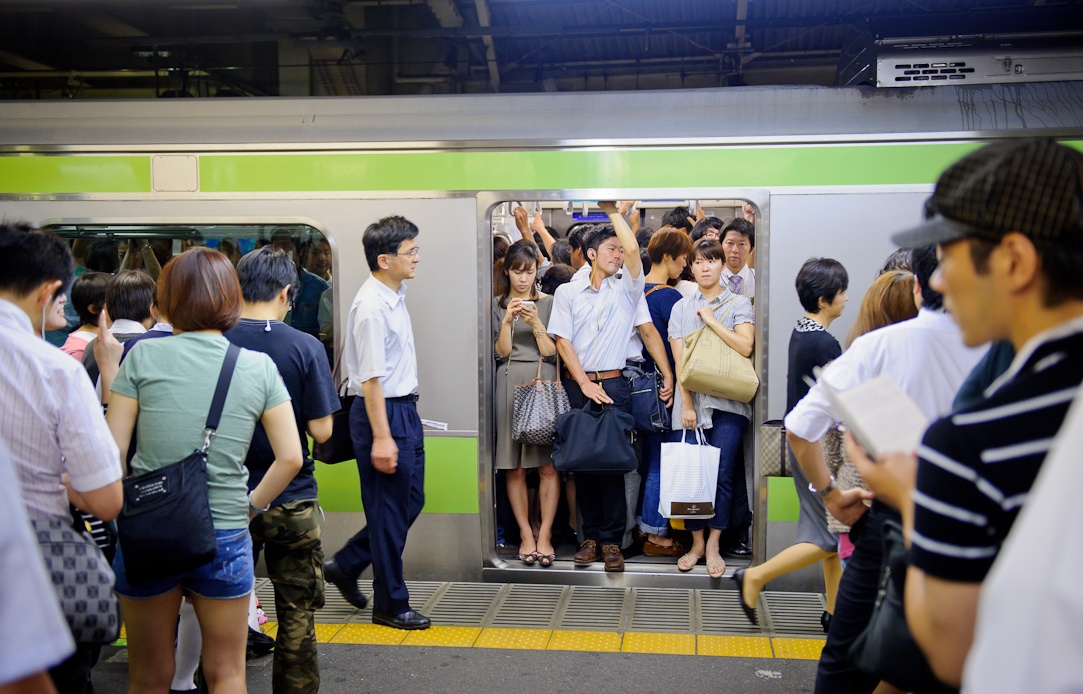10 Intricate Ins & Outs of Train Etiquette
Like many things in Japanese society, there are several unspoken rules regarding public transportation that are learned over time. In order to prepare travelers, we've compiled a list of 10 important rules to keep in mind—some explicit, some common sense, and others that may be acceptable in your hometown but are frowned upon here.
By Wendell T. Harrison1. Waiting for the Train
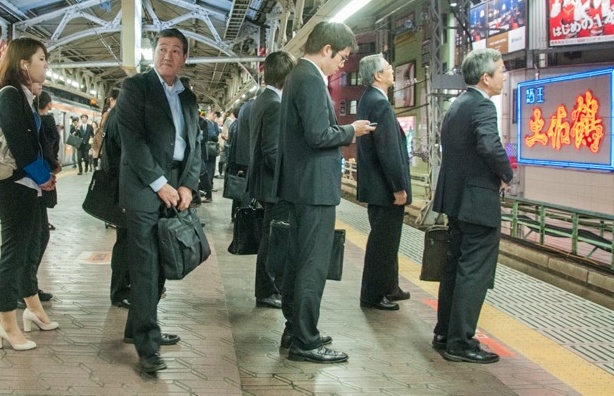
http://bluebalu.com/2012/11/24/tokyo-jr-trains/
Although there are several signs in Japanese, not every station has explicit rules about the expected way to get on and off the trains. While waiting for a train, there will be painted markers on the ground indicating where the train doors will stop. If you're not the first person to arrive at the platform, you'll surely see people queuing up behind these indicators, in double-file lines. Make your way to the back of the line and wait for the train to approach.
While the stations usually announce this, please stand behind the yellow line for your safety. Also, these lines, with their raised bumps, are intended to assist blind and visually-impaired passengers. So be sure to stand behind—not on—the line.
2. Getting on the Train
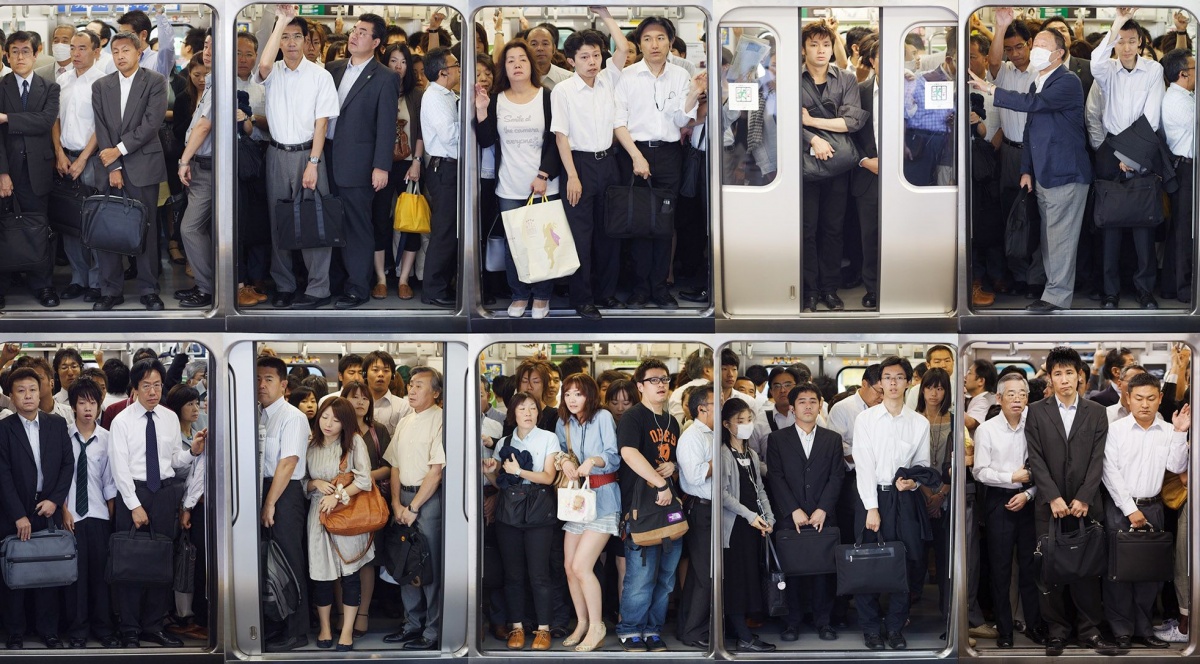
http://www.japantoday.com/category/picture-of-the-day/view/rush-hour
When the train arrives, the two lines will split on either side of the door. This creates a clear pathway for those exiting the train. Once those passengers have alighted, the lines can begin to enter the train without breaking formation.
It's considered proper to make your way to the center of the train, in the aisles between the seats, to avoid blocking the pathway. While this isn't always possible, especially in rush hour, it's courteous to avoid standing right in front of the door.
3. Courtesy Seats
https://www.youtube.com/watch?v=ply55wua6r0
Located at either end of the train car, yusenseki (Courtesy Seats) are very visibly marked as special seating for elderly or injured passengers, expecting mothers and passengers with disabilities. Parents holding young babies are typically allowed in this area as well. While it’s fine to relax in this section when there are few passengers, you should relinquish your seat to any passengers who might need it.
Also, while you're in the vicinity of the yusenseki, be sure to avoid using your mobile phone, even just to check your messages, as it could cause issues for passengers with pacemakers or other electronic implants. While many train etiquette rules are punished by a silent glare, infractions committed in the priority area tend to get more serious, as passengers tend to be more vocal about their rights there.
Of course, this courtesy of giving up your seat to passengers who might need it should be extended to all seats. Simply standing and making a gesture to the intended recipient is enough to get their attention, but keep in mind that, as a matter of Japanese politeness, they may refuse at first. So be persistent. While it’s common to see locals with their heads bowed—sleeping, reading, texting or otherwise avoiding eye contact with fellow riders—strive to be an ideal passenger and your fellow commuters will appreciate the gesture.
4. Baggage
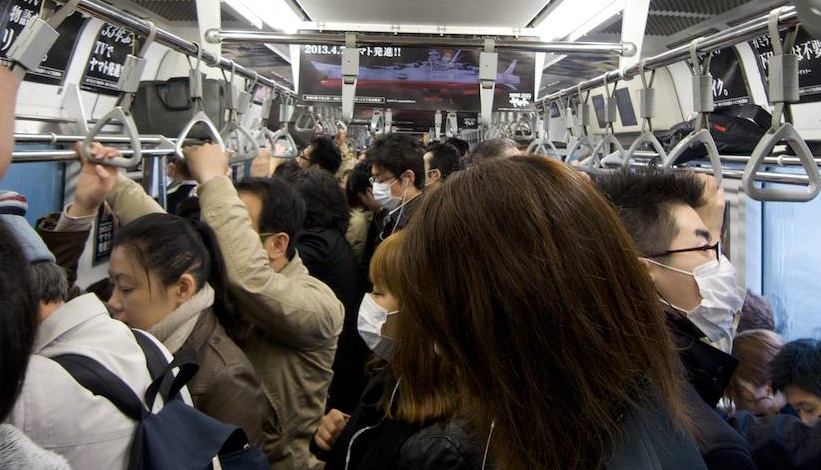
http://villagehiker.com/travel/travel-japan/japanese-train-etiquette.html
Rush hour trains can get incredibly congested, leaving very little room for baggage. You can easily image the discomfort of being crushed by someone's work bag or backpack. Using the overhead storage rack will help alleviate this problem, as well as give your hands a break. If you can't make it to the rack, placing your heavy bags at your feet or below your waistline will also make the ride more comfortable for your crammed companions.
5. Alighting the Train
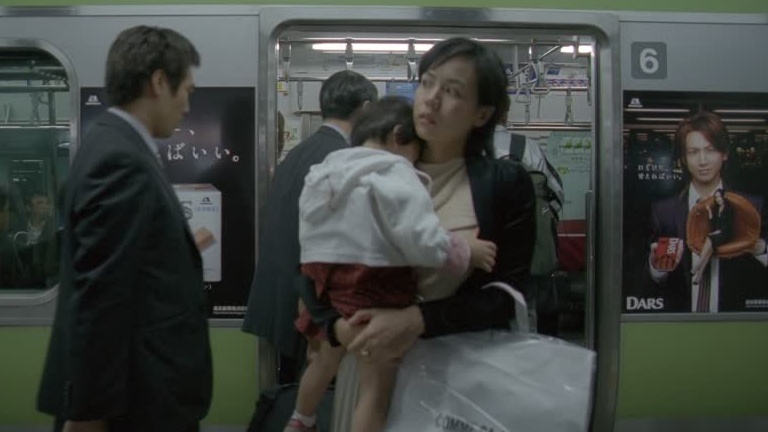
http://footage.framepool.com/en/shot/734653908-tokyo-metro-underground-train-underground-platform-commuter
Getting off the train is fairly simple, as most passengers will line up outside the train in the fashion described above. However, if you're standing right in front of the door as the train reaches a station, you're expected to exit the train, standing to the side of the doors, to let those getting off do so. It's allowed to stand slightly in front of the queuing passengers in order to get back on the train before they do, so no need to walk to the back of the waiting line. Just make sure that you move closer to the center of the train in order to avoid blocking the doors again.


